MARKET OVERVIEW
This global wine market rests in the larger alcoholic beverage industry, which has for centuries been infused with cultural caprice, technological paradigm changes, and shifting consumer minds. Tradition remains, but the wine market flourishes with ever-changing agents of geography, science, and the marketplace. Looking forward, the global wine market will transcend mere product classification and will evolve as a highly complex ecosystem of production, distribution, branding, and experience-driven consumption.
Wine production will be geographically diverse, with the ancient continents like France, Italy, and Spain coexisting with the new worlds that promise different conditions for growing grapes and varietals. Terroir will be a perennial factor influencing flavor and quality perception; however, the advancement of viticulture and winemaking techniques will allow producers to be more adventurous with their endeavors across otherwise perceived regional limits. Notably, in this environment, the global wine market will serve as a platform to showcase how climate and agricultural practices impact both the quantity produced and the taste profile of wine, thus driving the producers towards alternative pathways, which can safeguard quality and authenticity.
Consumer behavior in the global wine market will still shift as demographics change and consumers continue to gather more awareness about all things from origins to processes to sensory experiences. Younger generations will incorporate growing demands for more openness, ethical sourcing, and sustainability. Producers and distributors will be responding with traceability, eco-packaging, and environmentally responsible practices becoming the ‘new norm.’ These trends will empower the marketing narrative but will also spur stakeholders in the industry toward investing in more resilient, equitable supply chains.
Distribution in the global wine market will undergo further changes, with the digital world getting stronger footholds for consumers to interact and engage with wines. E-commerce channels will no longer just be places where wine buys are made for convenience but also platforms where discovery and education come together. Virtual tastings, artificial intelligence recommendations, and interactive storytelling will enable brands to make long-term impressions outside the realm of retail. Conversely, on-trade venues such as restaurants and bars will be involved in how consumers first come in contact with wine in a social setting and how they judge it, often swaying these consumers to make purchases in an off-premise setting.
The wine culture will still keep its significance as a motivator in consuming wine since that would remain the focus of travelers wanting experiences centered on local traditions. Wine tourism, past requisites for more localized experiences, will demand more hybridization between being there and being online for all to participate. Wineries will engage audiences from afar with virtual tours, immersive content, and unique outreach. This will start to put storytelling and hospitality together hand in hand with the sensory appreciation in the global wine market.
Policy backgrounds, too, will influence the structure of the global wine market. These regulatory factors will direct all aspects of domestic production as well as international commerce-from labeling requirements to trade agreements. Producers will have to keep pace with the ever-changing standards of compliance involving alcohol content, ingredients, health warnings, and certifications. These regulations will affect formulation and labeling but will also influence logistics, pricing, and access to global commerce.
In the foreseeable future, the global wine market will show an impression of continuity and innovation. This market will always respond to technological change, consumer expectations, and environmental realities, while still firmly grounded in age-old traditions and regional identities. It will remain a cultural symbol and a commercial opportunity, a blend of art, narration, and strategic adaptation.
Global wine market is estimated to reach $537,445.57 Million by 2032; growing at a CAGR of 4.3% from 2025 to 2032.
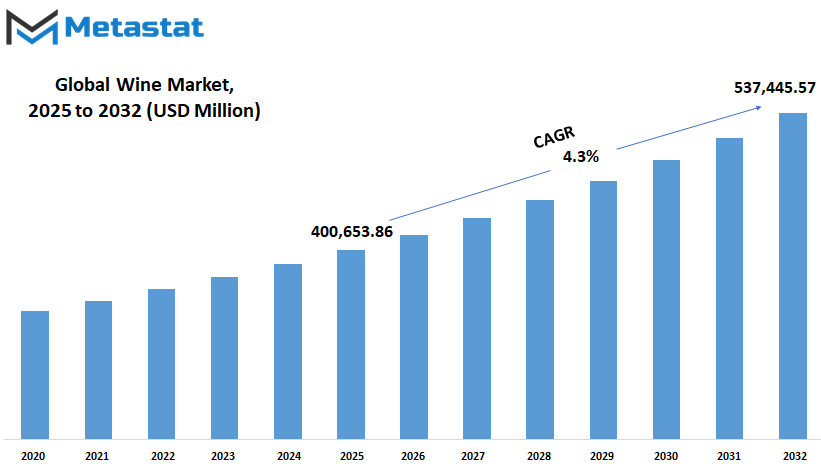
GROWTH FACTORS
The global wine market is stepping into a promising future where one will find changing lifestyles, flavors of consumers, and a rising interest in premium indulgences. Today, more consumers are leaning towards alcoholic beverages that are quality and specialty products rather than quantifiable. Consequently, winemakers have now focused their attention on small craft-batch production, where particulars and unique flavors count rather than on mass production. Wine is thus becoming increasingly less about tradition and more about personal preference, allowing different new labels and styles to find their homes on store shelves and restaurant menus.
Another major reason contributing to the growth of the global wine market is the increasing trend of wine tourism, wherein a lot of people find it the most interesting way to interact with culture, food, and relaxation. Most of all, it is no longer about tasting wine, it is about the experience; wine-tasting events, visits to wineries, and food pairing are now part of this trend, and now really encourages more consumers to appreciate and understand what goes into every bottle. It has created a social facet of drinking that is much more personal and classier, particularly among younger groups who value experience rather than mere consumption.
At the same time, though, the industry is actually experiencing various challenges that could impact the future of its growth. One of the key concerns lies in the impact climate change is having on grape production. Indeed, grapes are among the most sensitive of crops to changes in weather, and sudden variations in temperature, rainfall, or even timings of the seasons can turn devastation on the expected quality and quantity of grapes that are harvested. Thus, such factors increasingly make it difficult to manage and plan ahead in the face of rising demands from end users. In addition, in many countries across the globe, there are strict regulations on advertising and selling alcohol, further restricting the channels through which companies reach potential customers especially in the newer or more conservative markets.
At the same time new opportunities are presenting themselves. The demand for organic wine and low or non-alcohol alternatives is on the rise. Today's consumers are most health-conscious and demand products that match fit lifestyles while still delivering on the taste. Thus, space has been created for innovation in wine-making practices and ingredients. With such innovation, the more these new products are tried by consumers into areas where traditional wine has not been a strong component of the culture, the more ways will be uncovered for the global wine market to grow and connect with different types of buyers.
MARKET SEGMENTATION
By Product
Changes in consumer preference and lifestyle fashioned across the world will boost the global wine market in the future. The age-old tradition-woven association with culture of wine is being transformed into modernity by a combination of health consciousness, innovation, and changing habits. The more discerning a consumer becomes with respect to attainability, the higher the demand for wine produced with quality, variety, and sustainability. On the outlook for the future, the global wine market should unlock new avenues for opportunity when viewed from the angle of different types of products on offer.
Still wines, among these, are the most accepted product choice for many. With a wide array of flavors and styles, still wines appeal to casual drinkers and persons with a more discerning palate. This segment will most likely provide the foundation of the global wine market. The key to its growth lies within its adaptability. The future of still wine will tend towards increased organic techniques, lower alcohol content, and regional-specific tastes. There is a clear focus among producers on consumer satisfaction with quality and the ethical nature of production, all of which influence the style of making and selling still wine.
Sparkling wine, once kept only for celebrations, is now more typical for everyday consumption. It is the fresh and vibrant personality that attracts a younger clientele, especially in places where wine was not always a popular choice. As the global narrative continues to unfold, it will have those gravitating to sparkling wines. With more countries assembling their own takes, diversity is only bolstered in this category. Changes in packaging and marketing will innovate prime avenues in glittering wine that create appeal to a broader audience particularly the one on a lookout for something light, fun, and different.
The other category, although small, should not be ignored. It includes fortified wines, blends, and whatnot. These products will appeal to consumers who want something bold or unique. As the food and drink scene grows more experimental, this segment will offer something novel for buyers. It will also provide a platform for smaller producers who want to sell something really different.
In the future, the growth of the global wine market will be influenced by lifestyle changes, international flavors, and an increasing awareness about what goes inside a bottle. Consumers will push the market direction, and winemakers will respond through innovation, care, and quality that are in tune with contemporary values.
By Price Range
The global wine market continues to take shape in terms of changing lifestyles, consumer preferences, and the growing interest in wine culture across different income groups. Because wine has been made increasingly available to the world, so many will come to know it, not only as a beverage but as one more aspect of lifestyle, and so it will develop in every price category, from the economy-, to mid-range-, to premium-, to luxury, all touching different kinds of buyers but contributing in their own way to the development of the market.
For the economy segment, wine would probably be a casual or introductory option for those who enjoy it. This category will continue to grow, especially in the developing regions witnessing an upward trend in wine culture. Many producers will keep investing in this area, providing inexpensive but high-grade bottles. Such product availability in supermarkets and online platforms will help bring wine to a wider base of consumers for more frequent enjoyment.
The middle-tier market will generate the most excitement in movement, particularly because of its growth potential as interest by younger drinkers in experimenting with styles and origins increases. Those in this group generally appreciate the balance between price and taste, as well as a willingness to try wines from less popular regions. As education on wine increases together with more opportunities for tasting through digital platforms, attention will grow within this segment. Wineries will react through developments of products that marry affordability with some level of distinction.
Premium wines will cater more to those in search of a more sophisticated experience. These customers are inclined to drink wine with food, value storytelling behind the bottle, and would pay the extra expense of acquiring the quality. There will always be an increase in this segment because of a human tendency to search for significant moments and memory experiences. Wine clubs, vineyard visits, and curated boxes are perceived to become influential in this space, glorifying the special wines into which tradition, care, and uniqueness are poured.
Therefore, luxury wines would remain beacons of taste, exclusiveness, and inheritance. This part of the market is likely to show slow, steady growth due to the collectible, connoisseur, and luxury hospitality interests focused on this emerging segment. Producers in this assemblage would keep developing limited production levels, sophisticated presentations, and strong brand identity. With the support of digital platforms and global distribution, luxury wines will take to new audiences, who do not see them simply as drinks but consider them part of a lifestyle and identity.
By Distribution Channel
As consumer behaviors change, and new technologies alter the way people buy and appreciate wine, the global wine market will encounter significant changes. In the coming years, distribution channels will be an increasing determinant in how wine reaches consumers worldwide. Disparate in function and future growth potential, these channels are often grouped into on-trade and off-trade. As wine is being increasingly made available across regions and lifestyles, these channels will mold themselves to changing preferences and expectations.
The on-trade segment that encompasses the restaurant, hotel, bar, and cafe industries maintains relevance with its more intimate and curated experiences. People socialize over wine and still appreciate the experience of pairing a wine with food or sharing a bottle with friends on an outing. In the foreseeable future, advancements will include improved customer service, wine education programs for staff, and technology that enhances the ordering and inventory process. Tourism and hospitality will continue to have an influence on this channel. As tourism continues to develop in certain regions worldwide, particularly the areas producing wine, more potential customers will be introduced to their local wines via on-trade avenues.
For the most part, the off-trade distribution segment will see relatively fast growth. More and more people would like to indulge in wine in the comforts of home, whether it be during a cozy dinner for two or in the company of close friends. This very desire fueled the demand for a quick availability of wine without entering a bar or restaurant. Online sales will, in fact, see a greater boom; with better delivery systems, coupled with user-friendly websites, customers will be driven to discover new brands and place orders from the comfort of their homes. Some platforms will also provide personalized recommendations based on palate profiles, thus onboarding users into the new. This will be a convenience and value-driven development, which many producers will want to take advantage of to connect directly with buyers.
In the future, both trade channels will be Manufacturer and end-user direct channels of distribution for the budding global wine market. While one emphasizes the experience and setting, the other emphasizes convenience and access. Together, they will cater to the needs of a diverse array of wine drinkers from the casual, occasional consumer to the serious collector. The market moves on, thus changing with the influencing factors: technology, culture, and personal habits in how a consumer chooses, buys, and enjoys wine across the globe.
|
Forecast Period |
2025-2032 |
|
Market Size in 2025 |
$400,653.86 million |
|
Market Size by 2032 |
$537,445.57 Million |
|
Growth Rate from 2025 to 2032 |
4.3% |
|
Base Year |
2024 |
|
Regions Covered |
North America, Europe, Asia-Pacific, South America, Middle East & Africa |
REGIONAL ANALYSIS
The global market current trends are shifting, and this is changing people habits and the local excise interest toward advances in production and packaging. It remains to hold for various cultures, societies, and economies historically and currently; thus, the roles played by different parts of the world will all continue to differ for how the market gets developed in the future. This is affirmed from traditional wine-producing countries to new and emerging players; all will be orienting towards the future of wine-making, wine-consuming and wine sales.
North America will be the key part of wine consumption: it will heavily be influenced for example by the U.S., where lifestyle changes affect wine consumption with a variety of domestic and imported offerings in the country. Premium wines show steady interest among Canadian consumers, and regions with cooler climates within Canada are gaining profile for their palatable unique varieties. Wine is becoming a bigger hit in Mexico with younger generations being exposed to new drinks. This region will focus on innovation in typology and the packaging of wine for forward-looking consumers searching for convenience and possible sustainability.
Europe will keep its reputation, maintained over the years, as a traditional hub for wine culture. The foundations have already been laid in countries such as France, Italy, and Germany. This will also enable future growth. There is increasing interest in organic and biodynamic wines that would most likely change the way the vineyards in the region operate. The scope of wine tourism and local narratives in connecting smaller producers with global consumers seeking authenticity has become much wider.
The Asia Pacific is set to become one of the fastest-growing parts of the global wine market. Wine awareness is rising in China and India, primarily in urban areas, where youth slowly cultivates a liking for wine as part of their modern lifestyle. Japan and South Korea are also important in generating demand, especially for premium imports and exotic styles. Online platforms and digital marketing are also expected to be increasingly utilized in this area to penetrate those new to wine but curious about it.
Put South America on refrigerators in the future as a manufacturer of premium wines at affordable prices. Argentina and Brazil enter this category, as they are expanding, especially due to their greater exposure to international markets. Meanwhile, the Middle East and Africa will slowly develop more interest in wine consumption, particularly as tourism and hospitality grow in these areas. Countries like South Africa and some GCC parts will become important contributors to a wider introduction of wine consumption, creating new avenues for the growth of the market in the future.
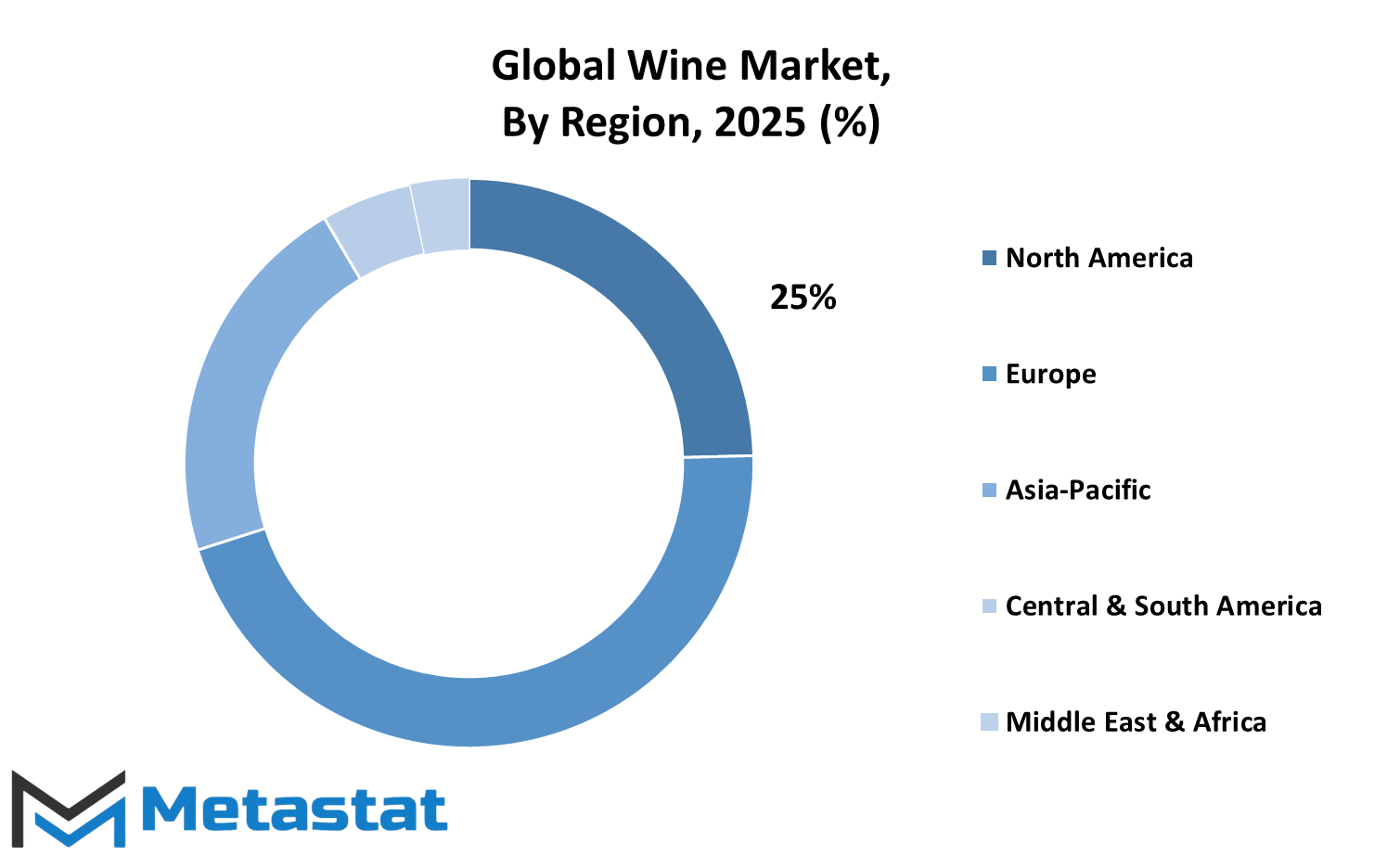
COMPETITIVE PLAYERS
More than anything else, the global wine market is expected to grow steadily in the years ahead, propelled by the trends in consumer preferences, advancements in production techniques, and ever-growing awareness of international brands. Consumers' constant tendency to experiment with different styles and origins of wine will most likely increase competition between producers. At the end of the day, the defining difference about the future is not just who makes the wine, but how he or she will adapt to changing tastes, sustainability, and global reach.
Well-known companies in the wine business are getting ready for what is to come. There is a definite movement toward quality, innovation, and more profound links to the market among the large-scale producers down to small niche vineyards. This includes E & J Gallo Winery, The Wine Group, Constellation Brands, and all other wineries that have a truly strong global presence and would very likely take advantage of their resources to keep ahead of consumer trends. Producing more will be one of these companies' activities, but they will also be focused on creating an experience that reaches consumers emotionally. Taste will become increasingly co-blended with branding and storytelling.
Producers across the globe are finding ways to be quite distinguishable. By this, names such as Moët & Chandon, Veuve Clicquot, and Laurent-Perrier would always carry worlds in the legacy of fine wine and sparkling choices to hold a strong-security position in global demand. At the same time, Sula Vineyards and John Distilleries try to do something completely new by putting forth interesting ideas and styles from their regions on burgeoning markets. They reflect the fact that wine isn't only an European tradition-by now, it has a wider appeal reflected in the embracing variety.
With changes in weather patterns and more land coming under serious consideration for total area, wine producers will have to grow differently as well as in new places. This will mean alteration within sourcing, but will also mean significant changes in taste and presentation. Companies such as Treasury Wine Estates, Miguel Torres S.A, et al., are already actively piloting new areas while also investing heavily in sustainability practices thus promising huge dividends in the future.
But local initiatives, such as those from Illinois Sparkling Co. and Giulio Cocchi Spumanti Srl, have demonstrated that internationally recognized actions may be realized from short-range efforts when they include responsibility and quality in their approach. The global wine market will not only be based on volume in the future but on the ability of these competitive players to react to what consumers want and allow in the world.
Wine Market Key Segments:
By Product
- Sparkling Wine
- Still Wine
- Others
By Price Range
- Economy
- Mid-Range
- Premium
- Luxury
By Distribution Channel
- On-trade
- Off-trade
Key Global Wine Industry Players
- Accolade Wines Australia Limited.
- Bacardi & Company Limited
- Bouvet Ladubay
- Bronco Wine Company
- The Wine Group
- John Distilleries
- Sula Vineyards Pvt. Ltd
- E & J Gallo Winery
- Constellation Brands, Inc.
- Treasury Wine estates
- Henkell Freixenet
- Illinois Sparkling Co.
- Miguel Torres S.A
- Krug
- Moët & Chandon
- Mumm
- Pernod Ricard Winemakers
- Champagne Pommery
- Schramsberg Vineyards
- Gancia
- Veuve Clicquot
- Vina Concha Y Toro SA
- CHANDON Wine
- Piper-Heidsieck
- Laurent-Perrier
- Mionetto Prosecco
- Casella Family Brands
- Caviro Extra S.P.A.
- F. Korbel & Bros
- Giulio Cocchi Spumanti Srl
WHAT REPORT PROVIDES
- Full in-depth analysis of the parent Industry
- Important changes in market and its dynamics
- Segmentation details of the market
- Former, on-going, and projected market analysis in terms of volume and value
- Assessment of niche industry developments
- Market share analysis
- Key strategies of major players
- Emerging segments and regional growth potential



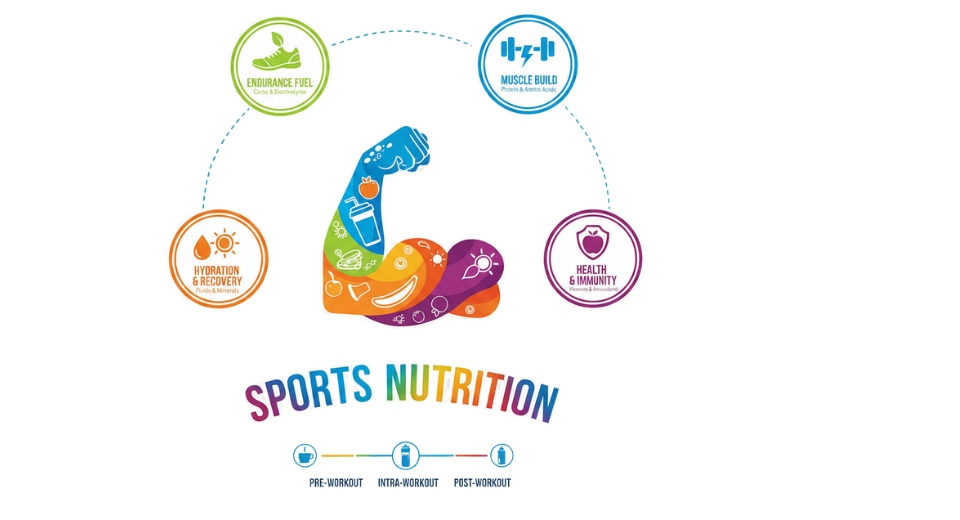
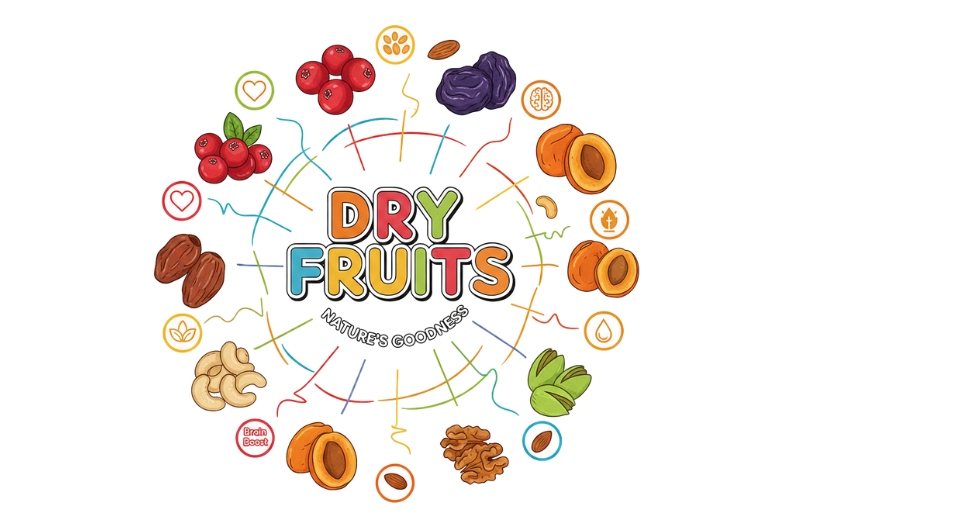

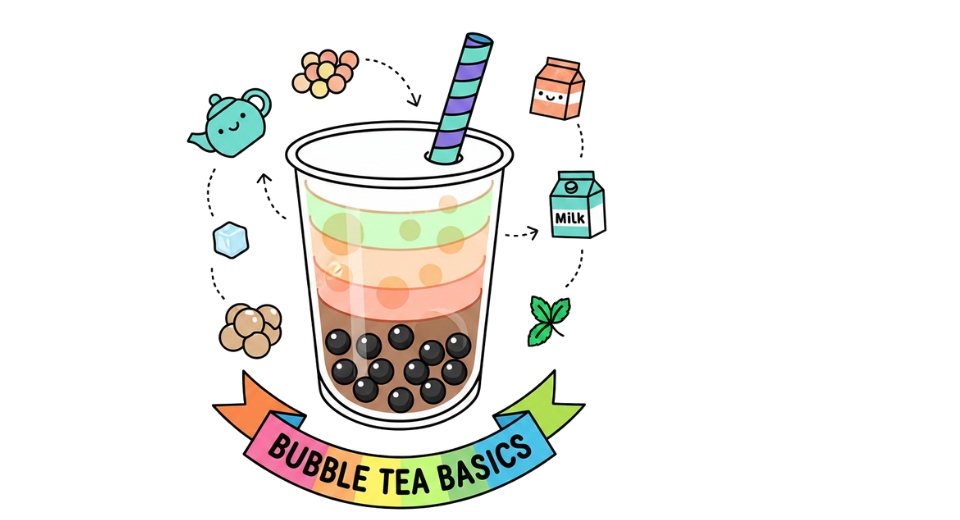

 US: +1 3023308252
US: +1 3023308252






